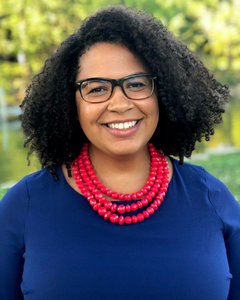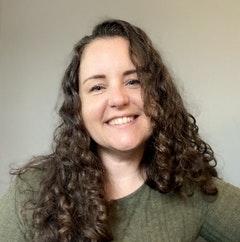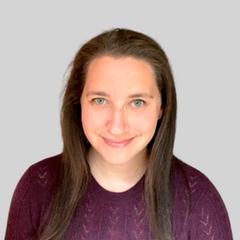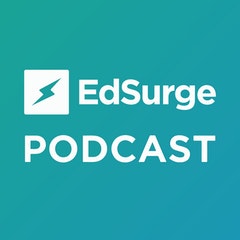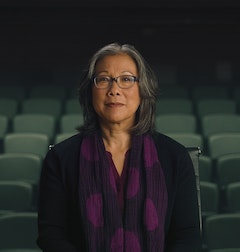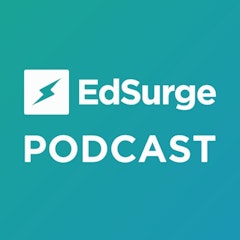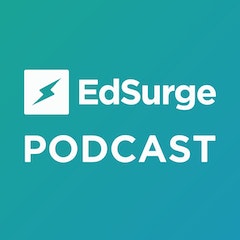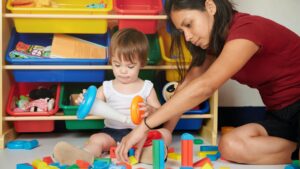Sociologist Casey Stockstill spent two years observing “all the richness happening” inside a Head Start preschool in Madison, Wisconsin. Then, she figured, she ought to look at one other early learning program, for good measure.
The Madison preschools shared much in common. Though one was funded by the federal Head Start program and the other was private, they both had five-star quality ratings from the state, hired experienced educators, used play-based curricula and followed similar routines. They even had many of the same toys.
“I didn’t set out for it to be a comparison about social class,” Stockstill shares of her research. But the two programs, so similar on paper, turned out to be “just so incredibly different.”
Stockstill, an assistant professor at Dartmouth College, published her findings in a new book, “False Starts: The Segregated Lives of Preschoolers,” which takes readers inside two preschool classrooms and examines how race and class divide children even in their earliest formal education experiences.
What Stockstill found in Madison was not an aberration. Across the United States, an estimated two-thirds of preschool programs are segregated — a reality that may directly contradict the widely held belief that preschool, and all high-quality early learning experiences, is a great equalizer.
EdSurge interviewed Stockstill earlier this month to ask about what she learned in researching “False Starts” and how that informs her understanding of preschool as an effective anti-poverty measure. The conversation has been lightly edited and condensed for clarity.
EdSurge: Tell me more about each of the two preschool classrooms you observed. They’re so similar on paper. Where do the divergences really come in?
Casey Stockstill: One of the main differences is in the stability of enrollment at Head Start. Head Start prioritizes certain populations. They really want to help kids in poverty or near the poverty line, but also kids experiencing foster care or homelessness. That creates some instability in enrollment. And so at the Sunshine Head Start classroom I observed, two-thirds of the kids were stably enrolled. They started in September. It was a full-year program, and they were there all the way until July.
But then one-third of the kids, those seats fluctuated. Someone was in foster care, and then they got placed elsewhere. It doesn't make sense to go to this school on that side of town. Or a family’s evicted and they move, so that spot changes over. Or job loss. Ours was a full-day class, so parents had to be working or looking for work. If they didn't meet those requirements, they got fewer hours and they got moved to a different class. So Head Start had this instability in enrollment. They also had fluctuating attendance, just if stuff was going on at home and kids didn't come to school.
And then the third thing that happened at Head Start is challenging behavior, and it's an interesting vibe in preschool because the teachers would talk about, like, ‘Oh, I heard this student's parents got in a domestic violence dispute.’ They hear rumors or gossip about things happening in families’ lives, but they often didn't directly know exactly what happened at home. And sometimes they do know. So Julian's mom went to jail for a few months — Julian is a kid in the book — and during that time and before and after, he had challenging behaviors. So he would jump off bookshelves, hit other children, curse. All of this stuff really draws teachers’ attention. So of course they're going to help the kids who seem to need it the most, and that's the kids who are new to a class. Some of them are new to preschool in general. They've never been in a group learning setting, and then some are kids with challenging behaviors.
So this, plus all of the paperwork required to meet the many mandates that Head Start has, took teachers’ time. And so you have a group of kids getting a lot of attention that have high needs, and then you have maybe 12 other kids who are managing their own affairs. They do a lot of pretend play, using their own system that they've created. They have little conflicts and fights, and they solve those on their own. They might be sneaking in toys to school and avoiding the teachers’ gaze with that.
To me, I was like, ‘OK, whatever. This is how preschool is. Families have challenges. I get it.’
When I went to Great Beginnings, the private center, I said, ‘OK, well what will these families be experiencing? What will be the disruptions to family life? I'm sure kids don't come to school sometimes. Maybe attendance will fluctuate.’ At Great Beginnings, they had a completely stable roster. I visited in February, and since the prior September, they’d had the same entire list of kids. They did have attendance fluctuation when the kids got sick or the family went on a vacation, but mostly all the kids were there every single day. So they don't have this kind of orientation mode thing where they're trying to figure out new kids all year long.
And then Great Beginnings had just way fewer challenging behaviors because the families there did not have any of these, what I call, poverty- and racism-related disruptions. There's no parents incarcerated, domestic violence, eviction, foster care — none of that is happening. There was a kid whose parents got divorced, and he really stood out. The teachers were like, ‘Oh, he is the only kid this year who doesn't have two married parents in the same house.’ They spent a lot of time talking about that with the class and with the kid. They want him to feel welcome.
So yeah, with all that, the teachers had more attention to spread. They also aren't doing all this paperwork that Head Start requires. The paperwork they did instead was communicating with parents, which I was like, ‘Is this annoying? You're emailing these parents all the time. You're sending all these pictures and newsletters.’ And I was kind of expecting them to be annoyed by it, but they didn't. They liked it. They said they didn't mind.
They use this extra attention they have to really engage closely with the kids. I call it ‘naturalized control.’ They would say they did play-based learning, but they were constantly a few feet away, physically there to hear kids' mundane play, just everyday play, and to comment on it and to correct it. Like, ‘Oh, you're being too rough with the stuffed animals,’ lots of adult attention.
That term ‘naturalized control’ — are you using that to communicate a good thing, a bad thing or just a neutral thing?
It just is. As a sociologist, I think often about social inequalities. So take this thing of pretend play. The Sunshine Head Start kids know how to do pretend play on their own, solve their own conflicts, and they have quite a few of them. And then at Great Beginnings, because of that control, it seems natural conflicts are prevented. The kids there are playing like mini adults. They're starting and continuing imaginative games, how the adults want them to. It's a little less creative. It also has less conflict.
That kind of just is, but if you think about what the implications would be if kids are playing in different ways, the Great Beginnings kids are showing up to kindergarten, functioning like mini adults. They expect a lot of adult attention. They're not too great at handling conflict. They interrupt, they raise their hand, they get their request met. They're used to expecting a lot from adults. And then think of the Sunshine Head Start kids, who are actually creative and independent, they've got problem-solving skills, but they're going to be less likely to ask for special teacher attention, interrupt adults, make all these demands.
That's super interesting. But it seems like if there are no conflicts at Great Beginnings, then when real conflicts arise as the child ages, are they less equipped to manage those?
Yeah, I think so. So I would see that as a downside. What's interesting to me, too, is a lot of people talk about preschool as leveling the playing field — that Head Start kids, especially, are going to get something to set them up for future success. But a lot of what I saw is preschools operating differently based on social class and race, because we've segregated them largely in the U.S. And they're kind of mirroring trends you see later in childhood.
Sociologists have talked about how middle-class kids spend their days from one adult-structured activity to the next. They're actually not good at managing their time and might even be having less conflicts. Like you go to school, and then you go to soccer, and then you go to piano. You know what I mean? And I'm like, well, here's the same thing operating with 4-year-olds. And then working-class kids sometimes have less access to those activities and spend more time hanging out, but they're managing their own time and they're managing conflict. And I'm like, well, preschool's kind of giving those poor and working-class kids more of the same, in a way.
What did you notice about the instruction the children in each program received? Was there a distinct difference in their educators’ qualifications or philosophies?
Not really. In both schools, they had a lead teacher who kind of did the lesson planning, ran things like circle time. I interviewed all the teachers, including assistant teachers at both sites, at both schools, and they sound so similar in a lot of ways: a high emphasis on play-based learning, bachelor's degrees in early childhood education, and a really strong emphasis on social and emotional skills. All of these teachers would say [social-emotional skills] are the purpose of preschool. They’d say the academic aspects, the reading and writing, will come, but they want to make sure the kids can interact with peers, engage positively and manage their emotions.
That said, all those things I mentioned with Sunshine Head Start, where they have a higher number of kids with challenging behaviors and all this fluctuation in enrollment, they're focusing on social-emotional skills with those challenging kids. And they didn't really get to this, like, higher-order academic stuff.
The starkest example was with reading. At Sunshine Head Start, they would attempt to read a book once per day, usually after coming in from the playground. The teachers were like, ‘OK, they got their energy out, they're calmer.’ And they wouldn't always finish that book, but they would always start the book. And for me, again, I'm like, ‘Whatever, it's preschool. Kids are rambunctious. This is normal.’
Then I go to Great Beginnings, and they read so much. They’d just sit on the rug and read. I started counting reading, and I observed that they read an average of six books per day. They always finished a book that they started. There was one day where they read for 32 minutes — the teachers were reading to these 4-year-olds for 32 minutes on the rug while they sit there quietly — and they're able to do that because they are freed up.
That's kind of the message I want to impart. They're freed up from this work of dealing with the fallout of poverty and racism. That's all put on Sunshine Head Start, and you get, instead, this class of kids who already have advantages all learning together.
It sounds like the picture that you paint in the book is, like, very similar approaches in the preschools, both five-star QRIS, both have qualified, experienced instructors. It's just that one program has friction and disruptions, and the other does not. Is that fair?
Yeah. The last thing I'd probably add is they both had great ratios. So NAEYC, one of the preschool industry groups, recommends one teacher to 10 children as a good benchmark for quality [in preschool]. These schools had a 1-to-6 ratio, which is excellent.
I think it's important because if you're a policymaker or just a concerned citizen, thinking, ‘What levers could we pull to make sure we're giving a great experience to marginalized children?’ A lot of them have been pulled at Head Start — the experienced teachers, the low ratio, the full-day care, a social worker. And yet what I'm finding is, separate is still not equal. We know that in so many other settings. I would argue that's also true of preschool.
What do you think would happen if those two preschools were integrated?
Yeah, it's kind of like the next natural question, right? I wondered the same thing, so my next big project is looking at this in Denver, which is where I moved next.
My rosy view is, like, there'll be these great utopias where teachers will have to be so creative and solve these problems and kids will connect across class differences. And some of that can still be true. But in my early findings, the downside is you get all the challenges of both. So one teacher's like, ‘I have these really demanding affluent parents who want everything tailored to their kid, and then I have these extremely poor families who have a lot of challenges, and they're all in one room.’
But I think working toward integration is one solution. It’s something we should move toward. I don't think that's the answer for all schools or all kids, but just spreading around some of the opportunities and challenges that you get with both types of kids.
What do you think about preschool as an anti-poverty measure, after researching and writing this book?
That one's interesting. Head Start is this kind of darling policy. It's got decent bipartisan support. I still am pro-Head Start, but I was really, really pro-Head Start when I first started.
There's so many encouraging quantitative metrics that you can't deny something positive is happening. Also, preschool is multiple things. It’s an educational experience, but it's also child care, and child care is an anti-poverty policy. Two thumbs up. It helps parents work to earn an income, so that's good.
I just think we can make it better. I think the quality rating systems we have are insufficient; they don't fully capture what's happening in classrooms. I think a lot of early childhood advocates know that. I think we need to ask deeper questions. It seems daunting to a lot of people because child care is not guaranteed, not fully available. Everyone's so focused on access.
But the way I try to think of it is we are trying to expand access and we're building some of these sites, so can we think more expansively about how to best support children and teachers? I don't think we have it right yet, and I think we need to really think critically about segregation and the unintended consequences that it's having.
- SEO Powered Content & PR Distribution. Get Amplified Today.
- PlatoData.Network Vertical Generative Ai. Empower Yourself. Access Here.
- PlatoAiStream. Web3 Intelligence. Knowledge Amplified. Access Here.
- PlatoESG. Carbon, CleanTech, Energy, Environment, Solar, Waste Management. Access Here.
- PlatoHealth. Biotech and Clinical Trials Intelligence. Access Here.
- Source: https://www.edsurge.com/news/2024-01-16-are-preschools-as-segregated-as-the-rest-of-american-life
- :has
- :is
- :not
- :where
- $UP
- 10
- 12
- 32
- a
- Able
- About
- academic
- access
- across
- activities
- activity
- actually
- add
- Adult
- adults
- advantages
- advocates
- Affairs
- After
- again
- Ages
- All
- already
- also
- always
- am
- American
- an
- and
- animals
- answer
- any
- approaches
- ARE
- argue
- arise
- around
- AS
- ask
- aspects
- Assistant
- At
- attempt
- attendance
- attention
- available
- average
- avoiding
- away
- Bad
- based
- BE
- because
- been
- before
- behavior
- being
- belief
- Benchmark
- BEST
- Better
- Big
- bipartisan
- book
- Books
- both
- Building
- but
- by
- call
- CAN
- capture
- care
- casey
- Center
- certain
- challenges
- challenging
- Changes
- child
- Children
- Circle
- citizen
- clarity
- class
- classroom
- closely
- come
- coming
- comment
- Common
- communicate
- communicating
- comparison
- completely
- concerned
- conflict
- conflicts
- Connect
- Consequences
- constantly
- continuing
- control
- Conversation
- correct
- could
- counting
- course
- created
- creates
- Creative
- crop
- curse
- darling
- day
- Days
- dealing
- decent
- deeper
- demanding
- demands
- Denver
- DID
- didn
- difference
- differences
- different
- differently
- directly
- Dispute
- disruptions
- distinct
- divide
- do
- does
- doesn
- doing
- Domestic
- Domestic Violence
- don
- downside
- draws
- during
- each
- Earlier
- earliest
- Early
- earn
- Education
- educational
- educators
- Effective
- elsewhere
- emotions
- emphasis
- encouraging
- energy
- engage
- enrolled
- enrollment
- Entire
- equal
- equalizer
- equipped
- especially
- estimated
- Even
- Every
- everyday
- everyone
- everything
- exactly
- Examines
- example
- excellent
- Expand
- expect
- expecting
- experience
- experienced
- Experiences
- experiencing
- extra
- extremely
- fair
- fallout
- families
- family
- February
- feel
- Feet
- few
- fewer
- FFF
- field
- fights
- Figure
- figured
- finding
- findings
- finish
- First
- fluctuate
- fluctuated
- fluctuation
- focused
- focusing
- followed
- For
- formal
- Foster
- found
- friction
- from
- fully
- functioning
- funded
- future
- Games
- General
- get
- getting
- Giving
- Go
- going
- good
- got
- great
- Group
- Group’s
- guaranteed
- had
- hand
- Handling
- happen
- happened
- Happening
- Have
- having
- he
- head
- hear
- heard
- Held
- help
- helps
- her
- here
- High
- high-quality
- higher
- him
- Hit
- Home
- homelessness
- HOURS
- House
- How
- How To
- HTTPS
- i
- if
- implications
- important
- in
- Including
- Income
- incredibly
- independent
- industry
- inequalities
- informs
- inside
- instability
- instead
- integrated
- integration
- interact
- interesting
- interviewed
- IT
- jail
- Job
- July
- jump
- just
- Kid
- kids
- Kind
- Know
- largely
- Last
- later
- lead
- learned
- learning
- less
- lesson
- Life
- lightly
- like
- likely
- Line
- List
- little
- Lives
- ll
- Long
- Look
- looking
- loss
- Lot
- lots
- Low
- Main
- make
- manage
- managing
- mandates
- many
- May..
- maybe
- me
- mean
- measure
- Meet
- mentioned
- message
- met
- Metrics
- might
- mind
- minutes
- mirroring
- Mode
- mom
- Month
- months
- more
- most
- mostly
- move
- moved
- much
- multiple
- my
- Natural
- Near
- Need
- needs
- Neutral
- never
- New
- news
- Newsletters
- next
- no
- None
- normal
- Notice..
- number
- observed
- of
- off
- often
- on
- once
- ONE
- One-third
- only
- operating
- opportunities
- or
- Other
- out
- over
- own
- paint
- Paper
- paperwork
- parents
- peers
- People
- per
- philosophies
- Physically
- picture
- Pictures
- placed
- planning
- plato
- Plato Data Intelligence
- PlatoData
- Play
- playground
- playing
- plus
- policy
- poor
- populations
- portrait
- positive
- positively
- Poverty
- prevented
- Prior
- prioritizes
- private
- probably
- problem-solving
- problems
- Professor
- Program
- Programs
- project
- published
- purpose
- put
- qualifications
- qualified
- quality
- quantitative
- question
- Questions
- quietly
- quite
- Race
- racism
- raise
- rating
- ratio
- RE
- Read
- readers
- Reading
- real
- Reality
- really
- received
- recommends
- request
- required
- Requirements
- requires
- research
- REST
- right
- Room
- roster
- Rosy
- Rumors
- s
- Said
- same
- saw
- say
- School
- Schools
- see
- seem
- seems
- segregated
- sending
- sense
- separate
- September
- set
- setting
- settings
- shared
- Shares
- she
- should
- showing
- side
- similar
- since
- single
- sit
- Sites
- SIX
- skills
- So
- Soccer
- Social
- solution
- SOLVE
- some
- Someone
- something
- sometimes
- Sound
- special
- spend
- spent
- Spot
- spread
- Spreading
- Stability
- stable
- start
- started
- Starting
- starts
- State
- States
- Still
- stood
- strong
- Student
- success
- sunshine
- Super
- support
- sure
- system
- Systems
- T
- tailored
- Take
- takes
- Talk
- talking
- teacher
- teachers
- tell
- term
- that
- The
- The State
- their
- Them
- then
- There.
- These
- they
- thing
- things
- think
- Thinking
- Third
- this
- this year
- those
- though?
- time
- to
- together
- too
- took
- toward
- town
- Trends
- true
- try
- trying
- Turned
- two
- two-thirds
- types
- u.s.
- understanding
- United
- United States
- until
- use
- used
- using
- usually
- vacation
- Ve
- very
- Vibe
- View
- visited
- want
- was
- Way..
- ways
- we
- welcome
- WELL
- went
- were
- What
- whatever
- when
- which
- while
- WHO
- whose
- widely
- will
- Wisconsin
- with
- Work
- worker
- working
- would
- wouldn
- writing
- year
- years
- yet
- you
- zephyrnet

